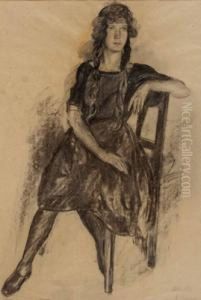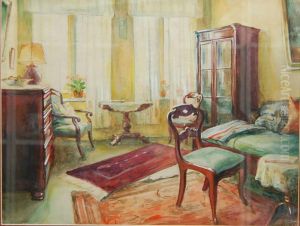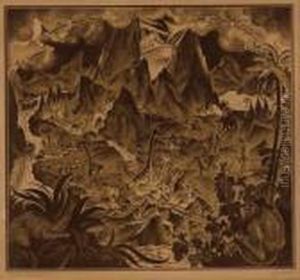Rudolf Franz Lehnert Paintings
Rudolf Franz Lehnert was an Austro-Hungarian photographer and artist born on July 13, 1878, in Gross Aupa, now part of the Czech Republic. He is best known for his orientalist photography, which captured the landscapes, architecture, and people of North Africa, particularly Tunisia. His works are characterized by their sensuality, ethnographic value, and artistic merit, bridging the gap between fine art photography and documentary imagery.
Lehnert met his future business partner, Ernst Heinrich Landrock, in Switzerland, and together they opened a studio in Tunis in 1904. Landrock managed the business aspects, while Lehnert was the primary photographer. Their collaboration resulted in one of the most successful photographic partnerships of the early 20th century. They sold prints, postcards, and photographic books, which were especially popular among European tourists and collectors fascinated by exotic locations.
Their studio was successful until World War I broke out, which forced Lehnert to return to Europe. He served in the Austro-Hungarian army, but after the war, he returned to Tunisia and reestablished his business with Landrock. The duo continued to produce high-quality images, with Lehnert often focusing on the nude or partially clothed figures, which although controversial, were in high demand.
Lehnert's photographic style is characterized by its use of natural light and composition to highlight the beauty of the human form within the landscape. His images are noted for their attention to detail, composition, and the ability to convey the texture and atmosphere of the North African environment. Despite the commercial nature of their work, Lehnert and Landrock's photographs have gained recognition for their artistic qualities and remain sought after by collectors.
Rudolf Franz Lehnert's contributions to photography extended beyond his orientalist works. He also captured scenes of everyday life, contributing to a comprehensive visual record of the Maghreb region during the early 20th century. His legacy is preserved through the numerous prints and originals that continue to circulate in the art market.
Lehnert's career came to a somewhat abrupt end with the onset of World War II, during which he was interned as a citizen of the Third Reich living in French Tunisia. After the war, he lived a relatively obscure life until his death on January 16, 1948, in Tunis. Despite the decline in his fame towards the end of his life, his work lives on, providing a valuable and enduring window into a world that has since undergone significant change.



